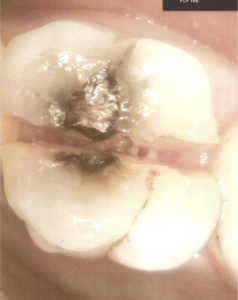Amalgam Filling Replacement Cairns
Amalgam fillings – is it ok to leave them in my teeth?
Mercury containing amalgam fillings have been in use for over 100 years and are very much out-dated technology.
Some dentists even in Australia still place them and, regrettably, the technique is still taught in a few dental schools around the world.
The reason why they still seem to be done is short term cost savings for the patient and even very poorly equipped dental facilities can easily cater to doing this type of filling.
Technically they represent the easiest fillings to place and it is possibly justifiable in third world countries where advanced dentistry in not readily available.
We see no other advantages of this technology and have held a policy of removing amalgam fillings at Future Dental since the late 80’s.
Many of us, including some Old School Dentists think “If it’s not broken don’t fix it!”….Maybe it’s time to think again?
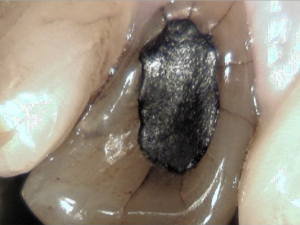
Why do we remove them?
Amalgam fillings quite simply cause irreversible cracking to the tooth. This is caused by three factors:
- Firstly, there is a difference in the expansion and contraction of this metallic alloy compared to normal tooth structure with temperature changes with eating and drinking. This puts a stress in the tooth with every thermal cycle. Young healthy teeth are still resilient and can stretch with the filling. About the mid-thirties, this natural resiliency of teeth starts to diminish and stresses that the tooth previously tolerated eventually cause stress cracks and fractures to occur.
- Secondly, various different amalgam alloys will slowly expand due to a chemical reaction with the trace amounts of zinc in the material as it reacts with water (saliva) and this causes a gradual swelling of the filling. This further stresses the tooth at a time when the tooth is already getting weaker.
- Thirdly, a metallurgical property of amalgam is static creep. This means as you continue putting chewing pressures on the top of the tooth, the filling gradually flattens out and swells out sideways.
These three factors cause the very high incidence of cracks and fractures in those teeth that have amalgam fillings. As such we regard all amalgams as purely long term temporary fillings that will most likely cause you to need a crown on that tooth later.
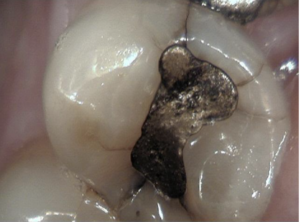
Cracks cause three problems
- Firstly, just like a crack in a windscreen, a crack in a tooth only gets bigger and deeper. For this reason, the tooth is greatly weakened and likely to start causing sharp pain called Cracked Tooth Syndrome which will require a crown (cap) to restore the strength of the tooth and eliminate the pain, temperature and sweet sensitivity.
- Secondly, when the crack continues down to the nerve (pulp) of the tooth, the nerve will most likely die, and you will require a root canal treatment to eliminate the abscess which will follow the nerve invasion of bacteria through the crack. This will likely cost as much or even more than the cost of the crown that the tooth already needs.
- Thirdly, and fortunately, less frequently, the tooth can split in two and then usually the only option is an emergency extraction.
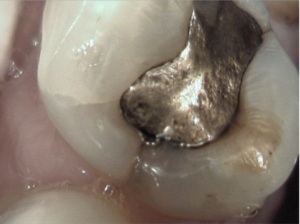
The costs involved in rectifying the damage caused by leaving old amalgams in your teeth long enough for this irreversible damage to be done can be very high when crowns, root canal therapy, extractions and bridges or implants become needed.
It is a false economy to think that it is OK to leave them in place until they do the damage and often preventive removal of all your amalgams is far cheaper than leaving them in the hope that no problem will occur. Regrettably some dentists even still seem to think this way.
Each tooth filled with amalgam is a TIME BOMB just waiting to blow up at the most inconvenient time.
Quite often removal of all your amalgams is cheaper than waiting for an emergency crown or even a root filling or worse still extraction and subsequent need to replace the tooth with a bridge or implant.
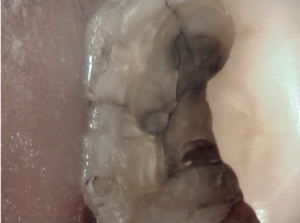
Other problems associated with amalgam fillings are the metallic appearance. We have not ever had a patient in the last 30 years who actually requested an amalgam filling, and we simply never place them. With tooth-coloured fillings that bond well to the teeth, no-one wants amalgam anymore. It seems to just be something that some dentists still do and often without informing patients that that is what they are about to do. We have had many patients come here from other practices horrified that they had an amalgam filling placed without their consent and requesting us for their removal.
FAQs
What is an amalgam filling?
An amalgam filling is made of a combination of metals and is used to fill cavities in the teeth. Although they are still used in some dentistry practices, the fillings are an outdated technology and can cause serious damage to the teeth. For this reason, we have a policy of removing amalgam fillings.
Why should I have my amalgam fillings replaced?
Amalgam fillings are considered an outdated type of dental treatment that doesn’t measure up to modern dental fillings and ways to repair teeth. Additionally, amalgam fillings also contain low levels of mercury which can be detrimental to your respiratory and mental health.
The more modern fillings are considered safer and more effective. Because amalgam wasn’t designed for long-term placement, it’s better to get the more modern fillings which are. While the filling may last a long time, the tooth around it has a greater chance of fracturing because of the amalgam. Leaving there risks long term need of crowns.
What's wrong with amalgam fillings?
Amalgam fillings, which contain mercury, are actually a very outdated technology and can cause irreversible cracking and fracturing in the tooth. When a tooth cracks, it is weakened. This can cause sharp pain, which will require a crown to restore the strength of the tooth and eliminate painful symptoms and sensitivity. In cases where a crack continues to the nerve of the tooth, it is likely that the nerve will die, leading to the development of an abscess. In rare instances, a cracked tooth can split in two, in which case an emergency extraction is required.
Is it worth having my amalgam fillings removed?
In many cases, having your amalgam fillings removed is cheaper than waiting for an emergency procedure or an extraction, with the subsequent need to replace the tooth with a bridge or implant. The longer you leave your amalgam fillings in place, the more likely you are to suffer from painful complications.
What are the symptoms of mercury toxicity from fillings?
Mercury toxicity from dental fillings (amalgam) is a debated topic. Symptoms can vary, but potential signs may include neurological issues like headaches and memory problems, gastrointestinal disturbances, a metallic taste in the mouth, fatigue, sensitivity or allergies, immune system problems, and cardiovascular symptoms. However, these symptoms can be associated with other conditions as well, so it’s essential to consult a healthcare professional for an accurate diagnosis.
Is it painful to remove amalgam?
The process of removing amalgam fillings is typically not painful. Before the removal procedure, your dentist will likely administer local anaesthesia to numb the area around the tooth being treated. This helps ensure that you don’t experience any pain or discomfort during the process.
During the removal, your dentist will take precautions to minimise your exposure to mercury vapour. The dentist will use high-volume suction to remove any particles and minimise the release of mercury vapour and a Hepa Filter device to remove the aerosol plume created.
For those who are particularly concerned, Selenium tablets or Vitamin C helps protect.
After the procedure, you might also feel slight soreness or tenderness in the area, but this is usually temporary and can be managed with over-the-counter pain relievers if needed.
It’s important to consult with your dentist or a qualified healthcare professional to discuss any concerns you may have about amalgam removal and to ensure that you receive proper care and guidance throughout the process.
Are white fillings better than amalgam?
While amalgam fillings are hard and robust themselves, they invariably leave stresses in the teeth in which they are placed.
Amalgam expands and contracts under temperature changes in the mouth with hot and cold foods and drinks. The tooth does not expand and contract as much, hence cracks and fractures start occurring.
Young teeth are quite resilient, but by about the mid-thirties, the teeth start to become more brittle, so we typically see the impact of this cracking more from this age on, although it still can occur much earlier in life.
Those who grind and clench their teeth are even more likely to suffer cracked and broken teeth if they have amalgam fillings in them.
We actually do more crowns for people because of the damage done to teeth by old amalgams, than from all other reasons together. Many teeth require root canal therapy due to vertical cracks down to the nerve of the tooth caused by amalgam fillings, and some break so severely they cannot be saved.
Future Dental stopped using amalgam 40 years ago. There are still a few dentists placing this very old technology, and there is probably still a good place for them in under-developed countries and in the public health system.
We have not actually had a patient ask us to do an amalgam filling.
White fillings are more aesthetically pleasing and require less removal of healthy tooth structure.

